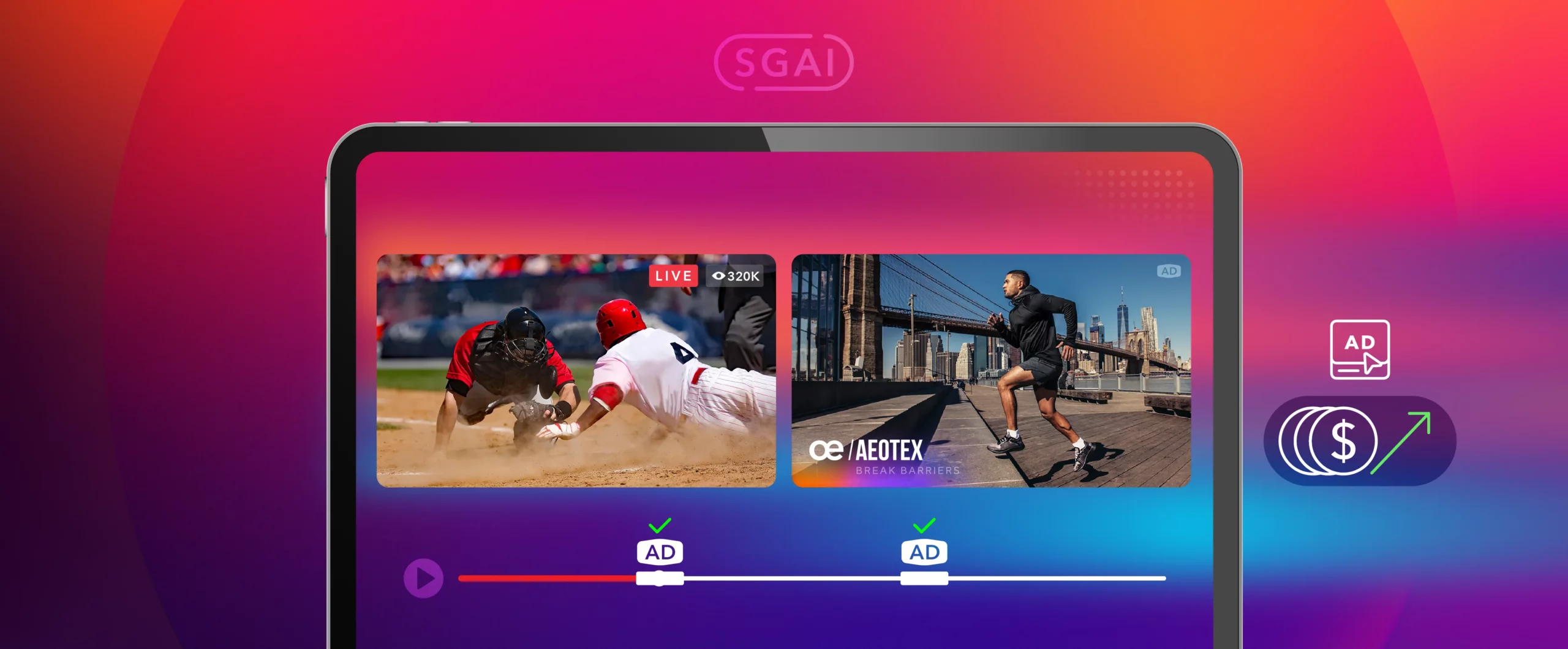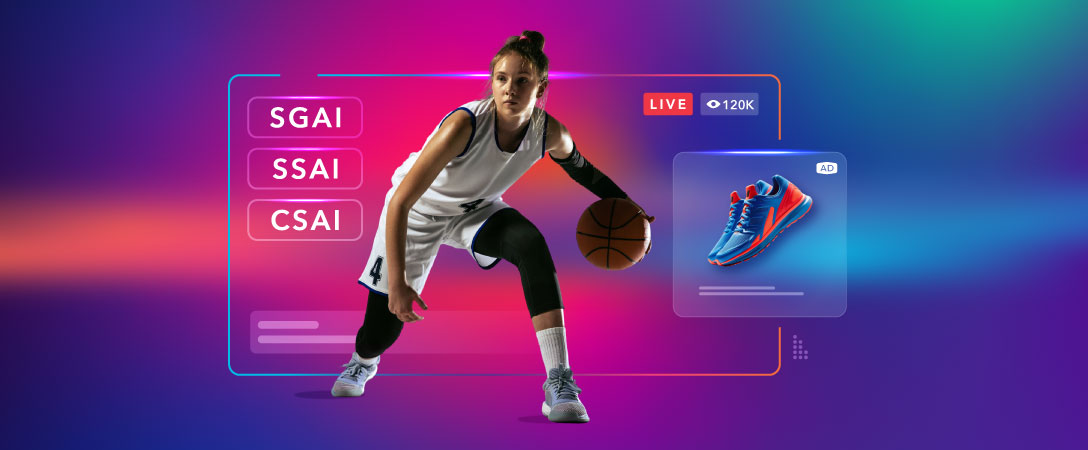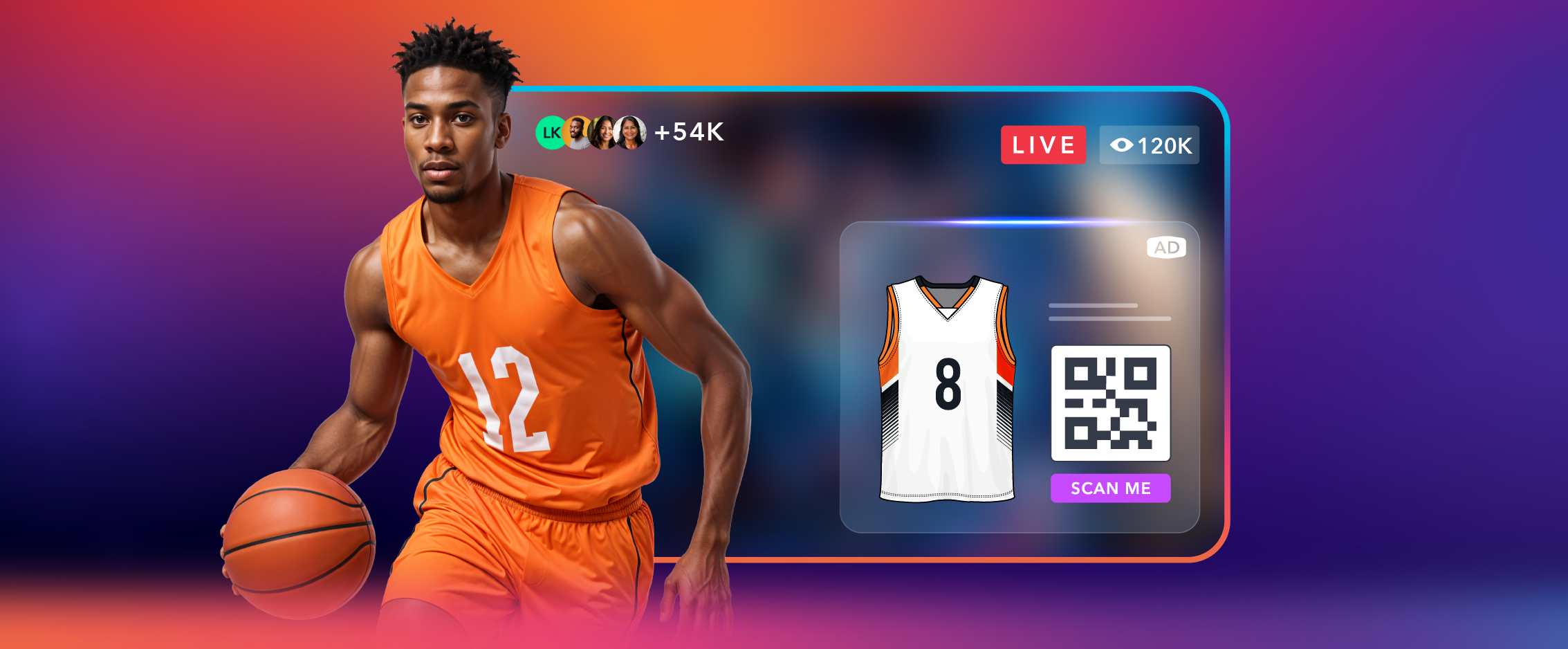Since the launch of Dolby OptiView Ads last year, Server-Guided Ad Insertion (SGAI) has become a hot topic in the live streaming ad space. At Dolby, we’re actively applying it to practical use cases and continuously refining our approach based on real-world feedback. As adoption grows, our clients are seeing measurable improvements in their ad performance—translating directly into increased ad revenue, especially in live sports streaming. In this blog post, we’ll show how our SGAI solution improved eCPM by an average of 76% through more efficient ad delivery in our use cases, highlighting key reasons behind:
- SGAI cut ad requests by 50% on average, reducing costs while boosting efficiency.
- Smarter ad logic raised average fill rates by 132%, improving inventory utilization.
- Enriched ad-tags improved programmatic match rates by 40% on average, unlocking more revenue.
- High viewability tracking increased eCPM and strengthened advertiser trust.
Each of these improvements contributes to a more efficient, profitable, and engaging ad experience. This allows publishers to maximize ad revenue without compromising the viewer experience. These metrics are measured through Google Ad Manager (GAM) as Dolby OptiView Ads is fully integrated with GAM360 and Google IMA. The performance metrics shared here represent average results across deployments. Actual outcomes will vary by client. Many factors such as device type, platform, and content type can influence the performance of an ad insertion solution. In our case, the reported averages were achieved by changing only the ad insertion technology. No other modifications were made.
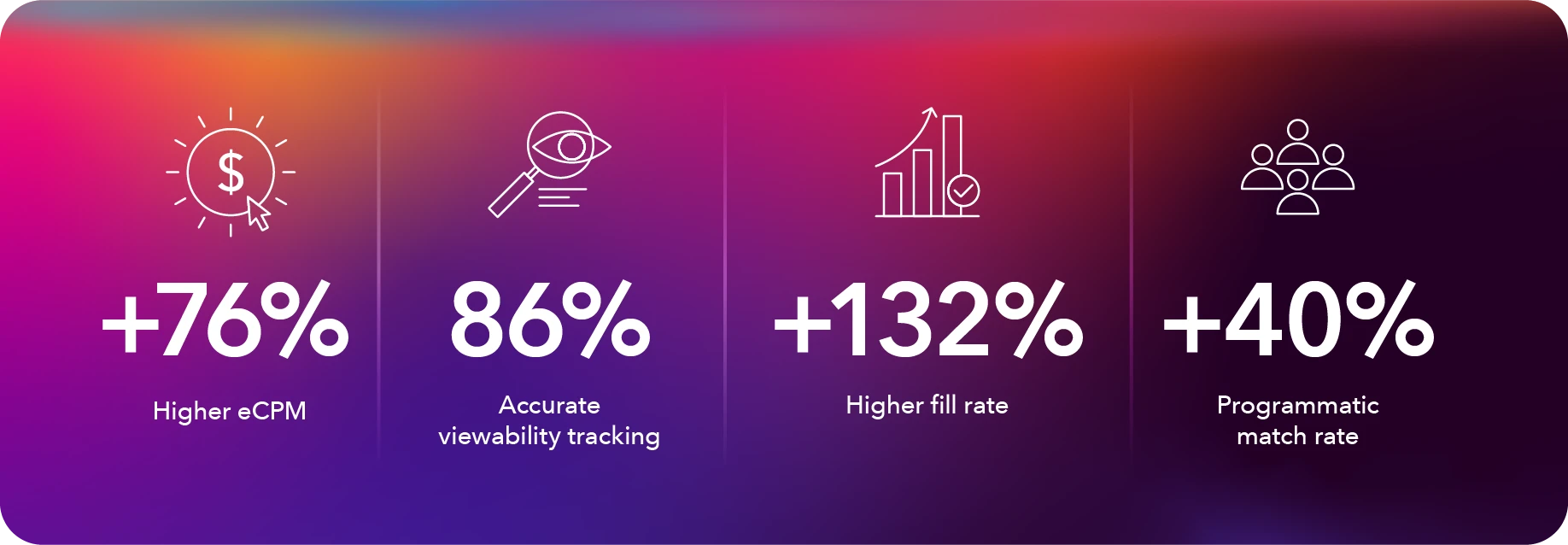
Boosting average eCPM by 76%
eCPM, or Effective Cost Per Mille, is a key metric to estimate the revenue a publisher earns from every 1,000 ad impressions, regardless of the pricing model (CPM, CPC, CPA, etc.). It is a key metric for measuring the success of different monetization strategies over time, allowing publishers to monitor changes and adjust their approach accordingly.
In analyzing results from our clients, we observed a 76% increase in eCPM compared to their previous SSAI solutions. This was based on a controlled comparison of viewer groups, all receiving the same content and duration but using different ad insertion technologies. Now, let’s take a closer look into some key factors contributing to this higher eCPM, including fill rate, programmatic match rates, and viewability tracking.
Increasing average fill rates by 132%
Fill rate refers to the percentage of ad requests that are successfully filled with ads. It’s a critical metric for publishers. Higher fill rates mean better use of their most valuable ad content and more ad slots being utilized—directly translating into increased revenue.
Based on our data, we’ve observed an average 132% increase in fill rates with Dolby OptiView Ads. There are several key factors behind this improvement:
- Smarter ad requests: Dolby OptiView Ads only request ads when there’s a high chance they’ll be viewed. It avoids proactively requesting ads for DVR windows unless users actively engage. Instead of pre-fetching too early, ads are requested closer to live playback, boosting viewability. This approach reduces ad requests by ~50% compared to traditional SSAI, cutting costs tied to unnecessary stitching fees and improving efficiency.
- Optimized ad break matching: The system matches that ad durations with the available ad break time. This helps maintain viewer engagement and optimizes inventory usage.
- Improved forecasting capabilities: With SGAI, publishers can more accurately predict ad inventory availability. This enables more efficient campaign forecasting. As a result, they can optimize sales strategies and maximize the value of their ad space.

Improving programmatic match rates by 40%
In addition to a publisher’s direct-sold inventory and partnerships with ad platforms, there’s also access to the open ad exchange. This is a public digital marketplace where advertisers and publishers transact in real time through open bidding. Ad exchanges enable dynamic competition for ad slots, often resulting in higher yield for publishers.
SGAI leverages client-side ad logic and fully utilizes the Google Interactive Media Ads (IMA) SDK. It enriches programmatic ad-tag signals with detailed parameters such as video player size, device type, budget thresholds, and content type. Demand-Side Platforms (DSPs) then use these enhanced signals to optimize targeting and performance. As a result, publishers are more likely to receive highly relevant, premium-quality ads from the programmatic market.
In our case, we see an average improvement of 40% higher programmatic match rate compared to SSAI. This translates into greater monetization opportunities for publishers using Dolby OptiView Ads, unlocking more value from the open ad ecosystem.
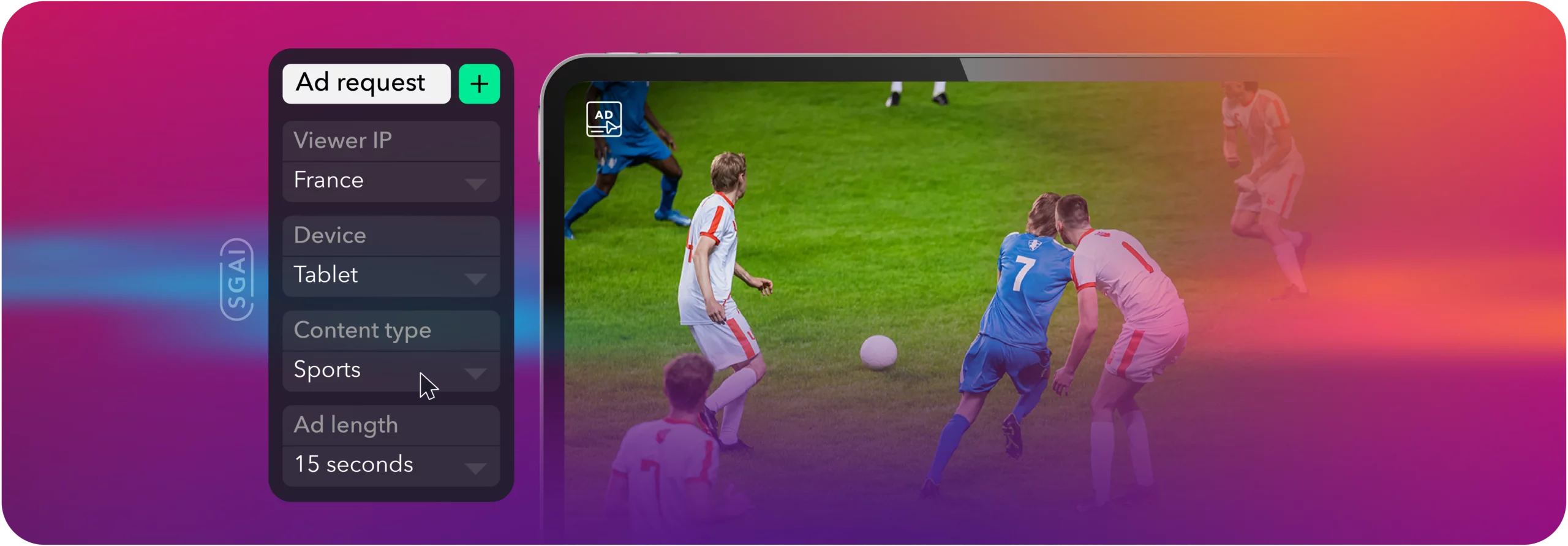
Enhancing viewability tracking (86% accuracy)
Accurate viewability tracking allows publishers to demonstrate the effectiveness of their ad placements, attracting higher bids and boosting eCPM. Dolby OptiView Ads offers a higher viewability tracking rate. This allows advertisers to verify whether viewers have actually seen their ads. Advertisers are more willing to pay higher CPMs for placements that provide viewability insights. These insights build confidence and help assess ad performance. In addition to enabling viewability, we also maintain high rates showing that ads play smoothly, are relevant, and do not cause viewers to tune out.
Compared to SSAI, accurate viewability tracking can be challenging because the server stitched ads into the video stream, making it harder to detect whether the viewer actually saw the ad (e.g., if they skipped or fast-forwarded). While SSAI can be integrated with client-side SDKs to improve tracking, this requires extra setup and doesn’t work out of the box. In addition to viewability tracking, Dolby OptiView Ads uncovers insights such as how much content is watched, mute status, full-screen playback, and more—all without adding complexity for publishers.
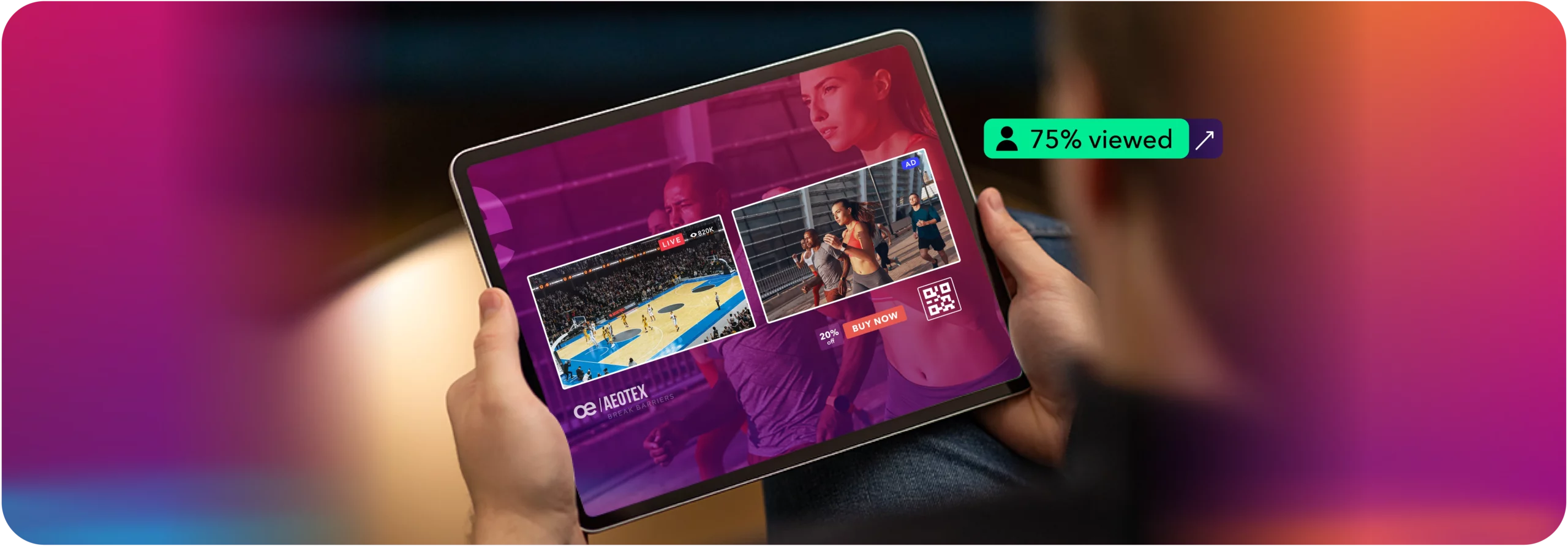
Conclusion
SGAI combines the best of both CSAI and SSAI, delivering a unified, streamlined solution that simplifies publisher workflows while boosting ad performance and revenue potential. Compared to SSAI, it is future-proof, more cost-effective, and offers greater capabilities out of the box. At Dolby, we’ve moved beyond the buzzword phase. We’re actively implementing SGAI with customers and applying practical insights to continuously refine our approach. Moreover, real-world deployments are already demonstrating the tangible benefits SGAI can deliver for live sports streaming.
One of the key strengths of Dolby OptiView Ads is that it’s an end-to-end solution—not just an add-on player feature. For SGAI to truly deliver on its promise, seamless coordination is essential across the video player, servers, platforms, devices, and applications. Dolby OptiView Ads achieves this by incorporating both server-side and client-side components.
This integrated approach has already demonstrated strong results in real-world deployments. If you’re interested in learning more or exploring how Dolby OptiView Ads can enhance your ad strategy, we’d love to connect.



